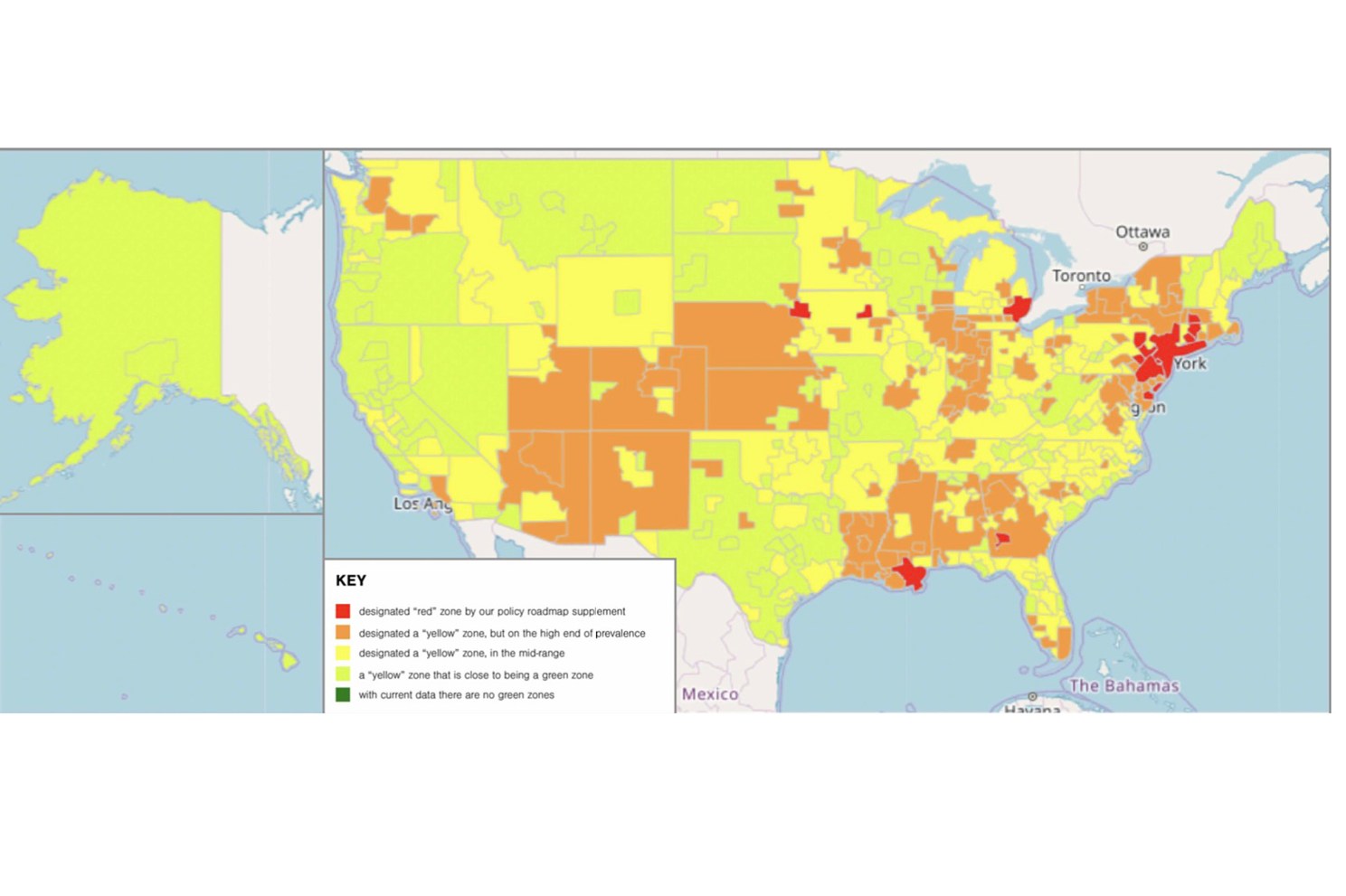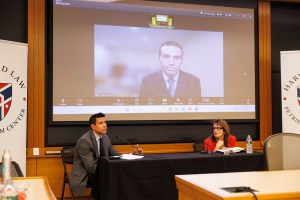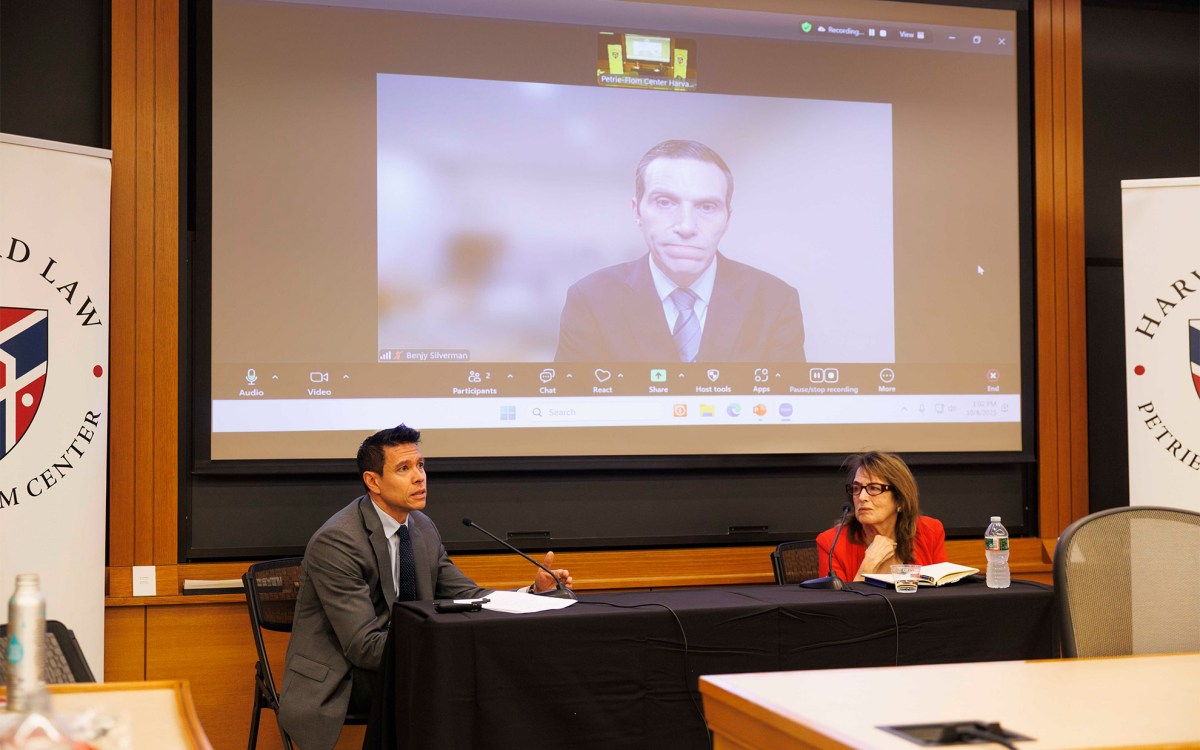Pandemic resilience: Getting it done

Disease prevalence by metropolitan statistical area (MSA) as of May 8, 2020. Map by Vi Hart/Microsoft Research.
As a follow-up to the “Roadmap to Pandemic Resilience,” which calls for massively scaled up programs of testing, tracing and supported isolation (TTSI) as a means to safely re-open the U.S. economy after COVID-19 closures, Harvard University’s Edmond J. Safra Center for Ethics, with support from The Rockefeller Foundation, released a new supplemental report, “Pandemic Resilience: Getting it Done.” This supplement includes detailed guidance on the levels of testing and tracing needed to reopen different communities across the U.S., based on disease levels in distinct locales.
“TTSI efforts are not one size fits all. Different metro areas and communities have different levels of COVID prevalence and thus different testing and tracing needs,” said Danielle Allen, director of the Center for Ethics. “Local and state authorities from Manhattan to Montana, Detroit to Arizona, will find detailed guidance for their communities in ‘Pandemic Resilience: Getting it Done.’”
“As mayor of an urban city within a rural county that’s part of a mid-sized metro area in a state where the prevalence of COVID-19 varies dramatically from place to place, I’m building a TTSI program for a unique place, not New York City or the Alaskan wilderness,” said Christopher Cabaldon, mayor of West Sacramento, California. “This roadmap doesn’t just show the TTSI highway, it zooms in on the on-ramps and surface streets that different localities can take to get on track. And it provides the clear directions to help us get there… and get it done.”
The report offers different TTSI program recommendations for locales that have low prevalence, moderate prevalence, or high prevalence, marked by green, yellow, and red zones, respectively. Green zone communities have few active infections (a current infection prevalence of less than roughly one per 36,000). Yellow zone communities have known active infections at a small scale (less than 1 percent prevalence of active virus in the population). Red zone communities have an outbreak which public health authorities have not been able to suppress (1 percent or higher prevalence of virus in the population). Differences in prevalence around the country help explain the range of political response to stay-at-home orders and advisories.
“The devastating economic impact of COVID-19 cannot be overstated,” said Anne-Marie Slaughter, CEO of New America and a co-author of the Supplement. “We understand the urgency to move past the mass isolation of stay-at-home orders and slowly re-open our state and local economies. We are focused on ways to re-open and stay open safely, so we can save lives and livelihoods simultaneously.”
The report supplement comes after new CDC guidance that supports broader use of testing not only for therapeutic purposes, but also for disease control and suppression. The revised guidance now includes testing for asymptomatic individuals, as directed by state and local plans. The supplemental report provides guidance for shaping those plans.




